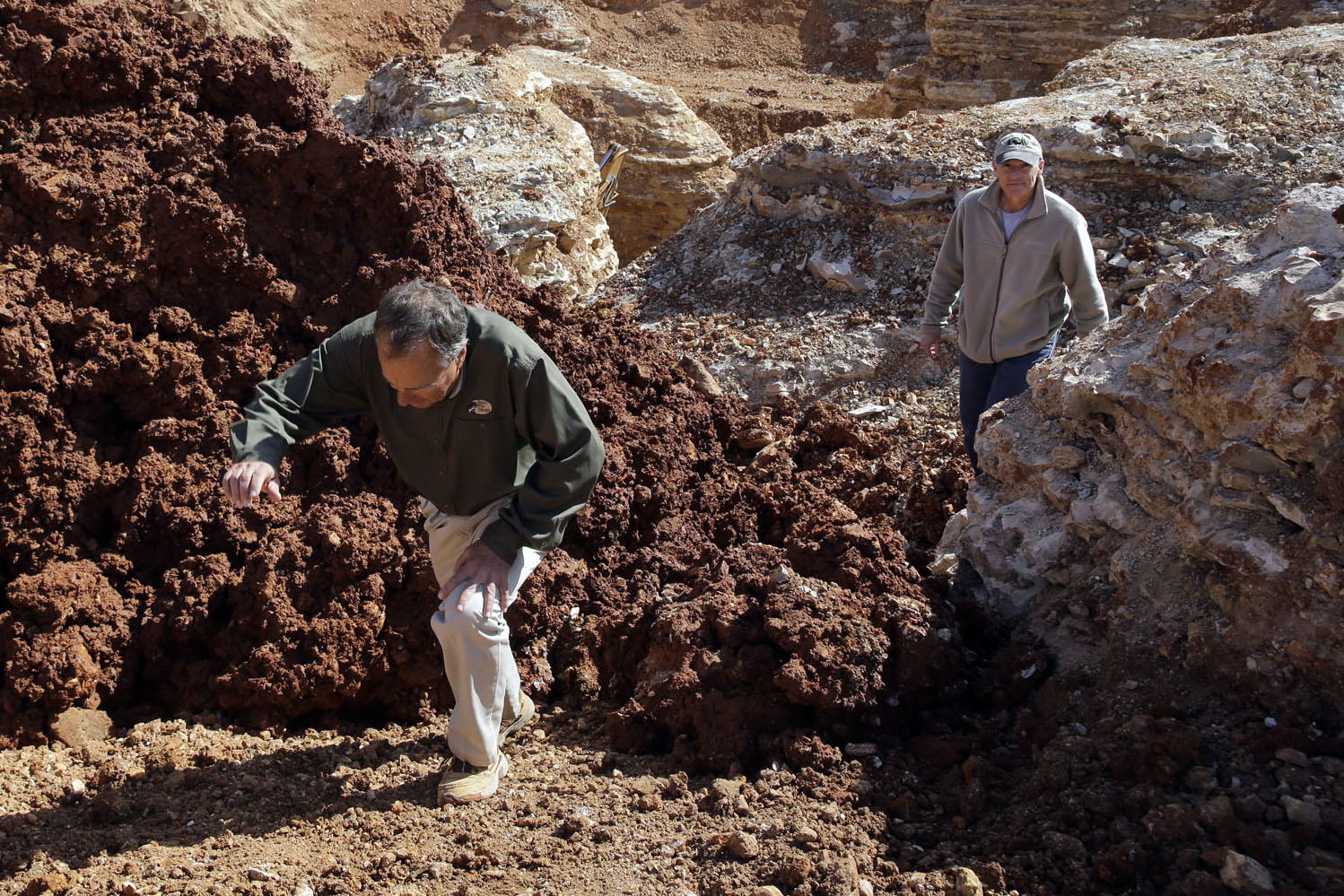An important cog in the news-making machinery of St. Louis has quietly slipped out of service with the departure of veteran Associated Press Correspondent Jim Salter.
For 31 years, Salter supplied the global wire service with a steady diet of hard news, sports and features from eastern Missouri. In 2011 he was part of a team that covered the Joplin tornado that killed 161 people, and three years later he was on the scene of riots in Ferguson following the police shooting of Michael Brown. He’s covered more than 70 executions.
At the beginning of this year, Salter, 65, accepted a buyout from the AP. He was part of an 8 percent reduction in staff–achieved through buyouts, job eliminations and layoffs–that the wire service had announced in November. The timing worked out for Salter since he had planned to retire.
The AP has had a correspondent in St. Louis since before the Civil War. But now it appears Salter will be the last.

“I don’t know if they’re ever going to replace me,” Salter said in a recent telephone interview. “I don’t know what their broad plans are.” Currently the AP has a staff photographer in St. Louis, as well as a reporter who specializes in environmental coverage. But there has been no successor named to replace Salter to cover the news, and the AP has not committed to do so.
Nicole Meir, media relations manager for The Associated Press, said by email “AP continues to have journalists based in St. Louis and remains deeply committed to its 50-state U.S. footprint.”
Asked the specific question as to whether the correspondent would be replaced, Meir replied, “I’ll direct you to my previous statement.”
‘Thrown into the fire’
Salter grew up in Hannibal, Missouri and earned a degree in mass communications in 1982 from Northeast Missouri State University (now Truman State University) in Kirksville. In the years that followed, he gained broad journalism experience at the Hannibal Courier Post covering city hall, county government, police agencies, schools and local sports.
“To me it was a real blessing to be at a place like that because you learn so much about everything,” Salter said. “You’re just kind of thrown into the fire.”
In 1993, Salter successfully applied for a job with The Associated Press and was assigned to its St. Louis office. There were six full-time journalists working out of a fourth-floor office in the St. Louis Post-Dispatch building downtown.
A correspondent, three reporters, a full-time sports reporter and a photographer fed the wires a steady stream of breaking news, crime, traffic fatalities, government stories, features and sports. Hundreds of AP member newspapers and broadcast stations shared all kinds of news in an information network that stitched together the world.
At that time the AP was financed by its member newspapers that paid dues based upon circulation. But when the Internet arrived, newspaper revenue suffered, and AP’s fortunes diminished.
“When the Internet really started hammering the newspaper industry, that was about the time the newspapers started really seeing the monster dot coms taking away all the want ads,” Salter said. “It all started to damage the newspapers and that affected our bottom line because newspapers were still a big part of the bottom line then.”
By 2008, the St. Louis full time staff was reduced from six to four, and in the years that followed, when a staff member retired or took another job, there was no replacement. By 2016, Salter was the only full time AP reporter in St. Louis. When the Covid-19 pandemic hit in March 2020, he was assigned to work out of his home in O’Fallon, Missouri, which remained his base until he accepted the buyout.
Now the AP has Jeff Roberson as a full-time photographer based in St. Louis as well as Mike Phillis, who is part of the AP’s climate team focusing on water issues. In October 2022 when a student and teacher were killed by a gunman who entered the Central Visual Performing Arts High School in St. Louis, Phillis helped with that coverage. “The school shooting was one of the few instances when we pulled him in,” Salter said. Otherwise, Phillis sticks to covering the environment.
‘Unflappable team player’
Reflecting on his career, Salter said covering the unrest in Ferguson following the police shooting of Brown was his biggest assignment. There were 15 days of rioting following Brown’s death on Aug. 10, 2014, followed by eight days of protests in November after the police officer who shot Brown was not indicted.
“It just resonated so much across the country,” Salter said. “It was more than just a case of a police officer shooting a young black man. It brought out all these issues about how black people were treated by the courts and by some police departments.” Ferguson was the national story the AP is best equipped to cover.
“If it’s not major breaking news or high-end enterprise, we don’t do it,” Salter said.
In recent years the wire service has converted nearly all coverage into a system in which stories are edited by national editors spread across the country.
Missouri is one of seven states in the Midwest region with Minnesota, North Dakota, South Dakota, Nebraska, Iowa and Kansas. An editor based in Minneapolis works with reporters in the region and together daily stories or enterprise projects are generated.
“It’s a combination of a reporter coming up with a story idea and working with an editor,” Salter said. “It’s a very collaborative system.”
As far as the state of Missouri coverage goes, the AP has a photographer and two print reporters in Kansas City, one of whom covers sports, as well as two reporters in the state capital of Jefferson City. There’s a videographer based in St. Joseph, Missouri as well as the two journalists still based in St. Louis.
At the time of Salter’s departure, his soon-to-be former colleagues assembled for a virtual retirement farewell through a Zoom call. Reporters who had worked with him said he was “an unflappable team player” and someone who can “jump in and do the news and coach others along the way.”
“You’re going to leave a big hole in the AP when you’re not here,” said David Lieb, the Jefferson City correspondent. “We’re going to miss having you around.”
There was a time when having an AP franchise was a ticket to newspaper circulation success. The Post-Dispatch once boasted at the top of its front page “the only evening newspaper in St. Louis with the Associated Press news service.” The print edition of the newspaper still heavily relies on the AP for national and international news and sports.
But other newspaper companies have decided to publish without the AP. Last year two large newspaper chains, the Gannett Co., publisher of USA Today, and McClatchy, publisher of the Kansas City Star and the Belleville News-Democrat, dropped the AP service.
According to David Bauder, the AP’s national media writer, newspaper fees now constitute just over 10 percent of its annual income. The AP no longer makes the claim that it’s the world’s largest newsgathering organization and does not reveal the size of its staff, Bauder has reported.
Still, according to a recent wire service news release, the AP remains the only news organization to report from across the country with journalists based in every state.
“The Associated Press has been a bedrock of accurate, nonpartisan journalism for the better part of two centuries,” said Julie Pace, AP senior vice president and executive editor. “We remain deeply committed to our 50-state U.S. footprint, at a time when state and local news outlets are under increasing pressure yet the need for fact-based news has never been greater.”
The AP and the John S. and James L. Knight Foundation have recently announced an expanded collaboration to strengthen the AP’s U.S. news report and coverage of state and local news. The collaboration emphasizes the delivery of news to digital audiences.
“There’s a movement to write for more web use,” Salter said. “Our biggest customers are now Google and Yahoo.”
The shift to more digital reporting means using more photos and video web-friendly stories. “The new hires going forward will be more video folks than print folks,” Salter said. “I think it’s an important point to make that the video hires are video journalists, not camera shooters. They are very talented.”

St. Louis correspondent Jim Salter, right, on assignment Thursday, April 14, 2016, with John Morris, founder of Bass Pro Shops in Ridgedale, Missouri. (AP Photo/Jeff Roberson)
- Opinion: Federal tactics in Chicago ignite fears over First Amendment, due process rights
- St. Louis Magazine to bolster news coverage with new grant
- News analysis: Freedom to read is in peril
- ‘How a journalism professor is redefining inclusion for people with disabilities’
- Opinion: Lambs to wolves — Mainstream media outlets sacrifice transgender community for views, relevancy

